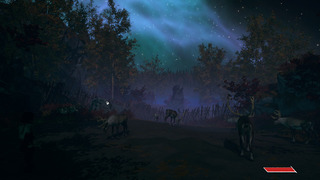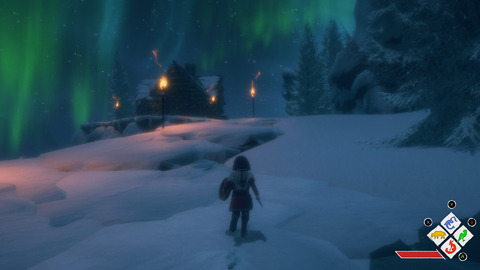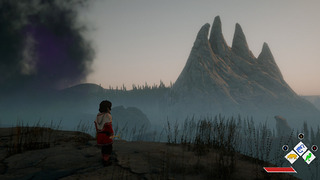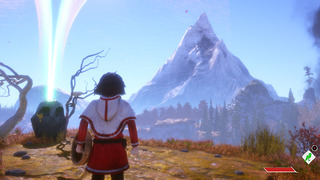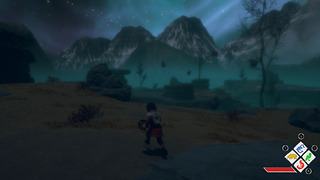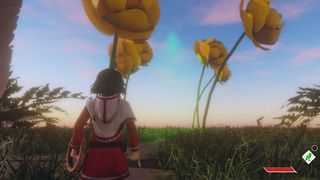From time to time, we see video games set in little-known cultures. This is the case with Skábma, which invites us to dive into the traditions and legends of the Sami, an indigenous people of northern Europe.
The child with the drum
Nothing predestined the young Áilu to live great adventures. He was content with his role as reindeer herder in his Sami village. But the story of the young boy takes another direction when he falls asleep during his work. Forced to find a missing reindeer to keep his place in the village, Áilu loses the animal, but finds the drum of a noadi. When his village falls ill, Áilu has no choice but to seek out the spirits of nature to fight the corruption that is ravaging the land.
To travel !
A good part of the adventure in Skabma therefore consists of traveling through the region to discover these different spirits. If we are quite limited at the beginning, each spirit discovered brings us a new power that opens up new paths and areas to explore. For example, there is a classic dash or an equally classic double jump. Alongside these powers which can be used freely, the player also gains the possibility of temporarily modifying certain places in his environment. This principle, called elementary “harmonization”, allows for example to make a platform appear or an air current that propels you in the air. A small limit all the same: a particular harmonization can only exist in one copy at a time. The game therefore combines exploration, platforming and a little bit of thinking.
Exchange drum for compass, make an offer
It seems obvious that the developers of the game wanted to encourage the player to immerse himself in the world presented to him. With the main consequence of having a game that offers little clarity to the player on what is expected of him. Goals sometimes boil down to “Travel”. Certainly. So don’t expect a map or objective marker, it’s not the kind of house. At most you will be able, by using the drum, to make footprints appear guiding you towards some of the objectives. And if, like me, you don’t have a sense of direction, you may have a really hard time getting around the game world.
Because if the game is regularly artistically very successful, it tries to hide the loading screens by making you go through caves serving as transitions between areas. This regularly leads to a very inelegant loading fog at the exit of the caves. It should also be noted that the players most inclined towards exploration will be able to count on a certain number of collectibles to discover, whether they are sometimes placed away from the main path or at the end of a platforming phase. a bit hidden.
Hard hard to be noadi
During these platform phases precisely, it is also necessary to accept a gameplay a little imprecise in the jumps. It happened to me regularly to go from a jump far too short to a jump far enough long without really knowing why. To make matters worse, the camera also complicates your life, mainly when chaining jumps using air harmonization. Jumps for which you often have to rely on the slight slowing down of time that accompanies the proximity of the points with which you harmonize to turn the camera in the right direction.
But if these small confusions can be accepted in a modest game, it is not the same for the main problem that I encountered during my 7 hours of play: automatic saves. These are indeed regularly bugged and you get stuck in a death loop from which you cannot get out, effectively ruining your progress. Red Stage Entertainment is tackling the problem with regular patches, but unfortunately there are still some left. Falling back on manual saves is a solution, but these only replace you at the last waypoint encountered.
Conclusion
Skabma is a game that risks dividing, between those that the universe it offers will absorb and those that its lack of direction will literally lose. It is also regrettable that the game suffers from so many small technical problems, in particular on its automatic saves which can ruin the progress of the player.
Test carried out by Grim on PC from a version provided by the publisher.
.
[related_posts_by_tax taxonomies=”post_tag”]
The post Skábma test – Snowfall – An imperfect dive into Sami culture appeared first on Gamingsym.

